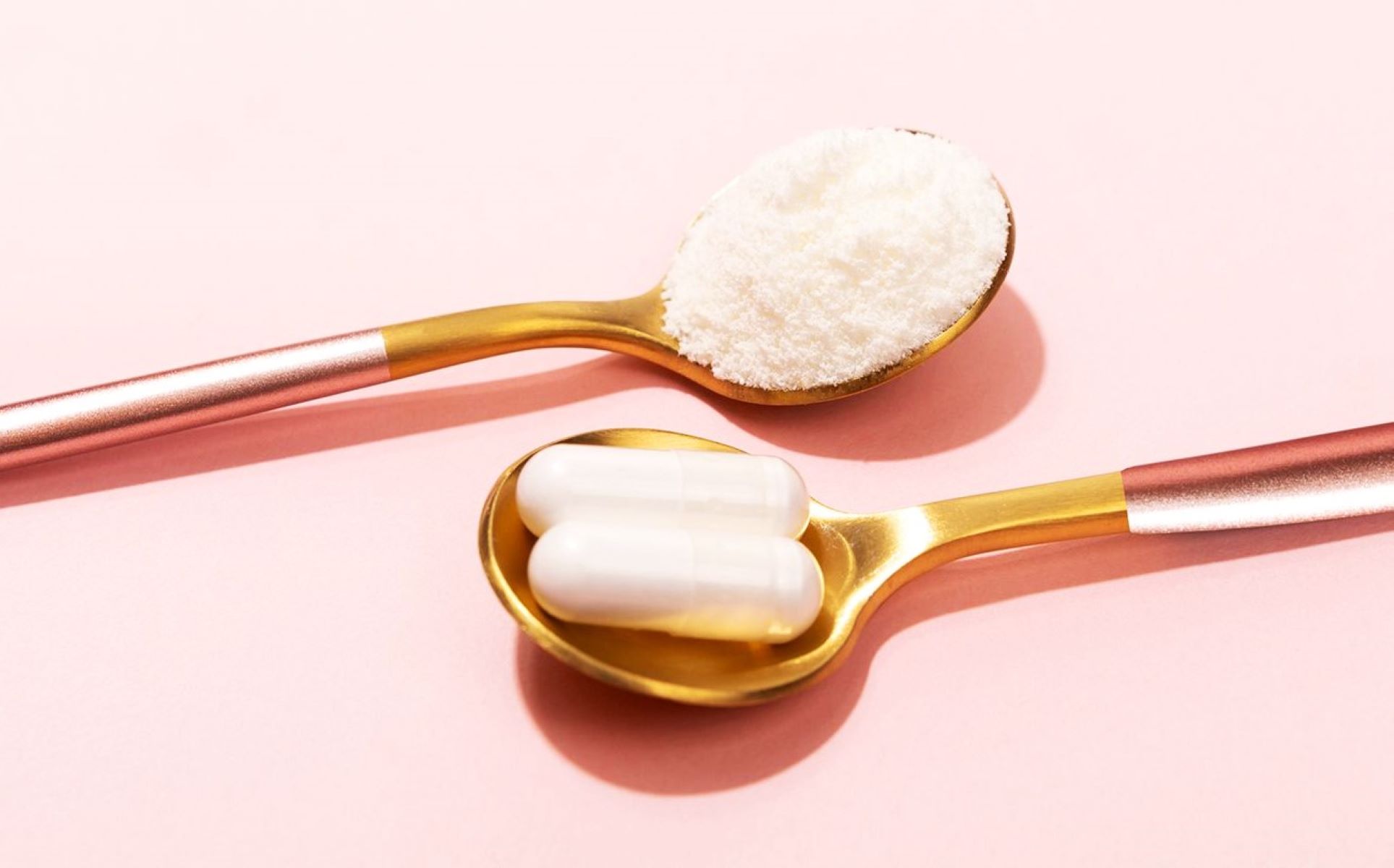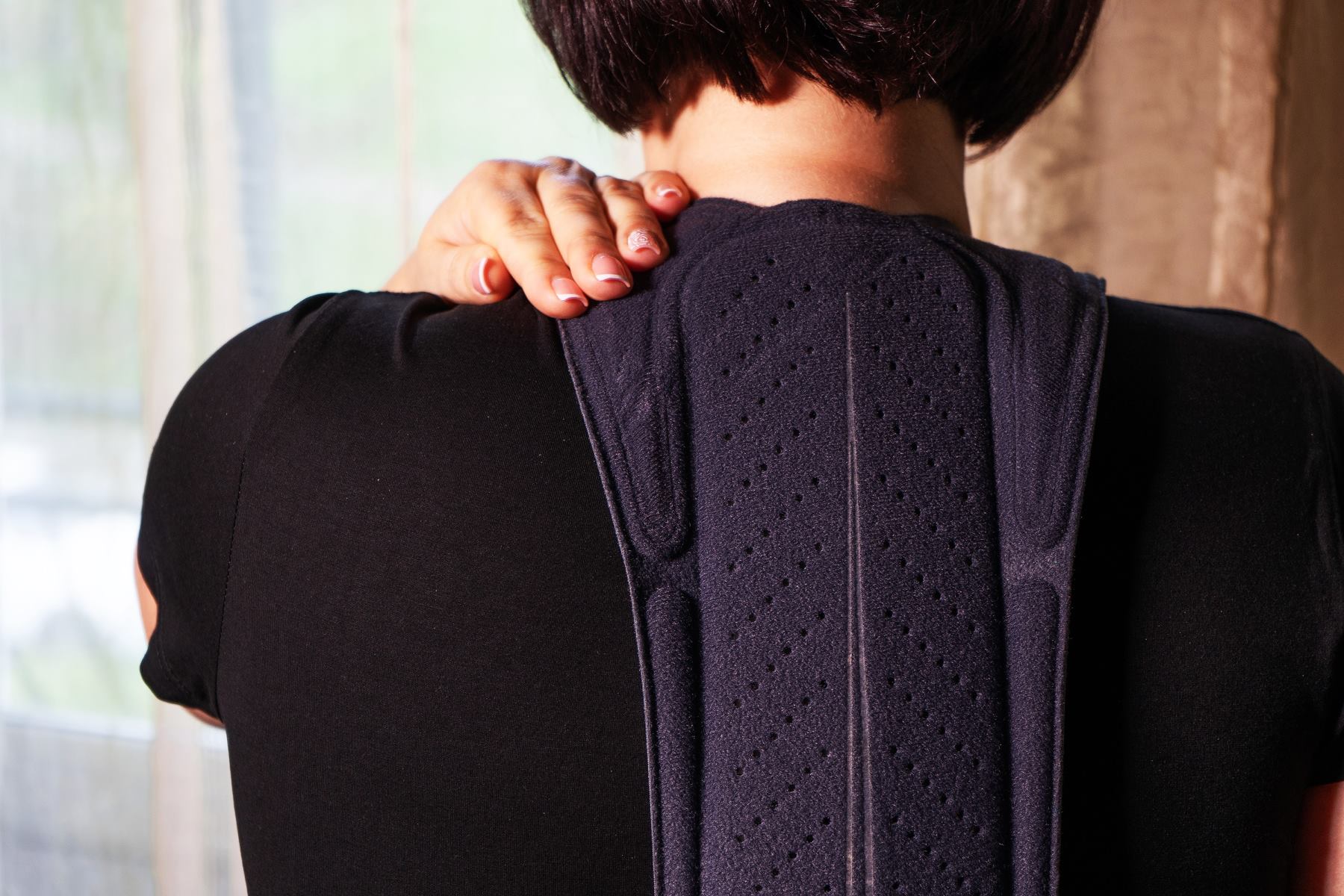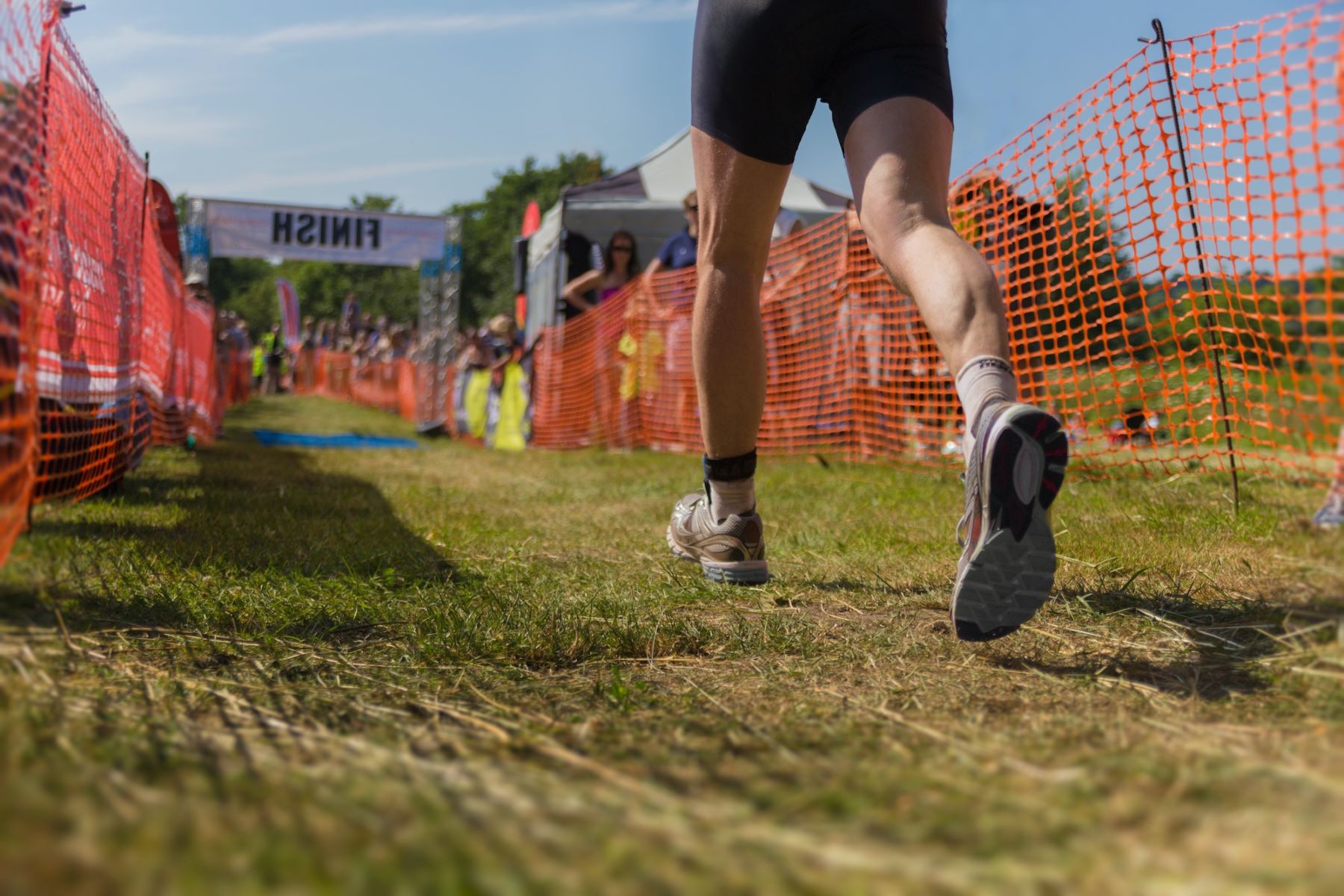Home>Health & Nutrition>Recovery>How Can I Alleviate Shoulder Pain After Completing Long Runs?


Recovery
How Can I Alleviate Shoulder Pain After Completing Long Runs?
Published: February 26, 2024
Discover effective recovery techniques to alleviate shoulder pain after long runs. Learn how to ease discomfort and prevent injuries for a smoother running experience.
(Many of the links in this article redirect to a specific reviewed product. Your purchase of these products through affiliate links helps to generate commission for Therunningadvisor.com, at no extra cost. Learn more)
Table of Contents
Understanding the Causes of Shoulder Pain After Long Runs
Shoulder pain following a long run can be a perplexing and discomforting issue for many runners. While the primary focus may be on the lower body during running, the upper body, particularly the shoulders, also plays a crucial role in maintaining balance and stability. Understanding the potential causes of shoulder pain after long runs can shed light on effective strategies for alleviating discomfort and preventing future issues.
-
Poor Posture and Form: Maintaining proper posture and form during long runs is essential for distributing the impact evenly throughout the body. When runners experience fatigue, there is a tendency to slouch or hunch the shoulders forward, leading to increased tension and strain in the shoulder muscles.
-
Overuse and Fatigue: The repetitive motion of arm swinging during long runs can lead to overuse and fatigue in the shoulder muscles. This can result in discomfort and pain, especially if the muscles are not adequately conditioned to handle the prolonged activity.
-
Tension and Tightness: Tightness in the chest and upper back muscles, often exacerbated by prolonged running, can contribute to shoulder pain. This tightness can pull the shoulders forward, causing strain and discomfort in the shoulder joints and muscles.
-
Inadequate Warm-Up and Cool-Down: Failing to properly warm up the shoulder muscles before a long run and neglecting to engage in post-run stretching and cool-down activities can increase the likelihood of experiencing shoulder pain. Without adequate preparation and recovery, the muscles may become more susceptible to strain and injury.
-
Imbalance in Muscle Strength: Weakness or imbalance in the muscles surrounding the shoulder joint can lead to instability and compensatory movements during running, potentially resulting in shoulder pain.
By recognizing these potential causes of shoulder pain after long runs, runners can take proactive measures to address these issues and minimize discomfort. Implementing targeted stretching exercises, incorporating strength training, and maintaining proper running form can all contribute to alleviating shoulder pain and enhancing overall running performance.
Tips for Proper Post-Run Shoulder Stretching
After completing a long run, it is crucial to engage in post-run shoulder stretching to alleviate tension and promote muscle recovery. Incorporating targeted stretches can help reduce the risk of shoulder pain and enhance flexibility, ultimately contributing to improved running performance. Here are some effective tips for proper post-run shoulder stretching:
-
Arm Across Chest Stretch: Begin by extending one arm across your chest and using the opposite hand to gently press the arm towards your body. This stretch targets the shoulders and upper back, providing relief from tightness and promoting increased range of motion.
-
Overhead Triceps Stretch: Raise one arm overhead and bend the elbow, allowing the hand to reach towards the opposite shoulder blade. Use the opposite hand to gently push the elbow further, feeling the stretch along the triceps and the back of the shoulder.
-
Shoulder Extension Stretch: Interlace your fingers behind your back and gently straighten your arms while lifting them away from your body. This stretch effectively targets the front of the shoulders and the chest, counteracting the forward-reaching motion often experienced during running.
-
Cross-Body Shoulder Stretch: With one arm extended straight across your body, use the opposite hand to gently press the extended arm towards your chest. This stretch focuses on the deltoid muscles and the upper back, releasing tension accumulated during the run.
-
Wall Chest Stretch: Stand facing a wall and place one hand on the wall at shoulder height. Slowly rotate your body away from the wall, feeling the stretch across the chest and the front of the shoulders. This stretch helps counteract the forward-leaning posture often adopted during running.
-
Neck and Shoulder Rolls: Perform gentle neck and shoulder rolls to release tension and promote relaxation in the upper body. Slow, controlled movements can help alleviate stiffness and discomfort in the neck and shoulder muscles.
By incorporating these post-run shoulder stretching techniques into your routine, you can effectively reduce muscle tightness, enhance flexibility, and mitigate the risk of experiencing shoulder pain after long runs. It is essential to perform these stretches in a controlled and mindful manner, focusing on deep breathing and allowing the muscles to gradually release tension. Additionally, maintaining consistency with post-run stretching can contribute to long-term shoulder health and overall running enjoyment.
Utilizing Ice and Heat Therapy for Shoulder Pain Relief
After completing a long run, it's not uncommon to experience shoulder pain as a result of muscle fatigue and tension. Utilizing ice and heat therapy can be an effective approach to alleviate discomfort and promote muscle recovery in the shoulders. Understanding the benefits and proper application of these therapies can significantly contribute to post-run recovery and overall shoulder health.
Ice Therapy
Applying ice to the affected shoulder can help reduce inflammation, numb pain, and constrict blood vessels, thereby minimizing swelling and discomfort. Ice therapy is particularly beneficial for addressing acute shoulder pain following a long run. To effectively utilize ice therapy for shoulder pain relief, follow these steps:
-
Ice Pack Application: Place a cold pack or a bag of ice wrapped in a towel on the affected shoulder for approximately 15-20 minutes. It's essential to avoid direct skin contact with the ice to prevent ice burns.
-
Interval Application: Repeat the ice therapy every 2-3 hours within the first 48 hours after the long run to maximize its anti-inflammatory and pain-relieving effects.
-
Elevation: If possible, elevate the affected shoulder while applying ice to further reduce swelling and promote fluid drainage from the area.
Heat Therapy
Heat therapy can be beneficial for relieving chronic muscle tension and promoting relaxation in the shoulders. By increasing blood flow and enhancing tissue elasticity, heat therapy can help alleviate stiffness and discomfort. When utilizing heat therapy for shoulder pain relief, consider the following guidelines:
-
Moist Heat Application: Apply a warm, moist towel or use a heating pad on the affected shoulder for 15-20 minutes. The gentle warmth can help soothe muscle tension and improve flexibility.
-
Caution: Avoid applying heat immediately after a long run or if there is any swelling present, as heat can exacerbate inflammation. Heat therapy is more suitable for addressing persistent muscle tightness and discomfort in the shoulders.
-
Moderation: Limit the duration of heat application to avoid overheating the tissues and causing discomfort. It's important to use heat therapy in moderation and in accordance with individual comfort levels.
Alternating Ice and Heat Therapy
In some cases, alternating between ice and heat therapy, known as contrast therapy, can provide comprehensive relief for shoulder pain. This approach involves switching between ice and heat applications to capitalize on the unique benefits of each therapy. The cold therapy helps reduce inflammation and numb pain, while the heat therapy promotes muscle relaxation and improved circulation.
By incorporating ice and heat therapy into post-run recovery routines, runners can effectively manage shoulder pain and support muscle recovery. It's important to listen to the body's signals and adjust the frequency and duration of therapy based on individual comfort and response. Additionally, combining these therapies with proper stretching and rest can contribute to a holistic approach to shoulder pain relief and overall well-being.
Incorporating Strength Training to Prevent Shoulder Pain
Incorporating targeted strength training exercises into a runner's routine can play a pivotal role in preventing shoulder pain and enhancing overall shoulder health. By focusing on strengthening the muscles surrounding the shoulder joint, runners can improve stability, reduce the risk of overuse injuries, and promote proper alignment during long runs. Here are some effective strength training strategies to prevent shoulder pain:
1. Shoulder-Specific Exercises
Engaging in exercises that specifically target the shoulder muscles can help build strength and resilience. Incorporating movements such as shoulder presses, lateral raises, front raises, and reverse flyes can effectively target the deltoids, rotator cuff muscles, and upper back, promoting muscular balance and stability in the shoulders.
2. Core Strengthening
A strong core plays a crucial role in maintaining proper running form and posture, which can indirectly impact shoulder health. By integrating core-strengthening exercises such as planks, Russian twists, and bicycle crunches, runners can enhance overall stability and reduce the likelihood of compensatory movements that may contribute to shoulder strain during long runs.
Read more: How Can My Diet Help Alleviate PMS Symptoms?
3. Resistance Band Exercises
Utilizing resistance bands can provide targeted resistance to the shoulder muscles, aiding in the development of strength and endurance. Exercises such as external rotations, internal rotations, and shoulder abduction with resistance bands can effectively engage the shoulder stabilizers, contributing to improved joint integrity and reduced susceptibility to pain and injury.
4. Yoga and Pilates
Incorporating yoga and Pilates into a training regimen can offer comprehensive benefits for shoulder health. These disciplines emphasize controlled movements, flexibility, and strength, all of which are essential for maintaining optimal shoulder function. Poses and exercises that focus on shoulder opening, scapular stability, and overall upper body strength can significantly contribute to preventing shoulder pain in runners.
5. Proper Form Emphasis
During strength training exercises, it is essential to prioritize proper form and technique to maximize the benefits and minimize the risk of injury. Maintaining alignment, engaging the appropriate muscles, and avoiding excessive strain can help runners develop strength in a safe and effective manner, ultimately supporting shoulder health and injury prevention.
By integrating these strength training strategies into a comprehensive training plan, runners can proactively address potential weaknesses and imbalances in the shoulder muscles, ultimately reducing the risk of experiencing shoulder pain after long runs. Consistency and progressive overload in strength training, coupled with adequate rest and recovery, can contribute to resilient and healthy shoulders, enhancing overall running performance and enjoyment.
Seeking Professional Help for Persistent Shoulder Pain
Persistent shoulder pain following long runs can significantly impact a runner's performance and overall well-being. When home remedies and self-care measures fail to alleviate the discomfort, seeking professional help becomes imperative. Consulting a healthcare professional, such as a sports medicine physician, orthopedic specialist, or physical therapist, can provide valuable insights and personalized interventions to address persistent shoulder pain effectively.
Upon seeking professional help, individuals can expect a comprehensive assessment of their shoulder condition. This may involve a thorough physical examination, including range of motion tests, strength assessments, and palpation to identify areas of tenderness or inflammation. Additionally, diagnostic imaging, such as X-rays, ultrasound, or MRI scans, may be recommended to evaluate the underlying structures of the shoulder joint and identify any potential injuries or abnormalities.
Based on the assessment findings, the healthcare professional can formulate a tailored treatment plan to address the specific causes of the persistent shoulder pain. This may encompass a multifaceted approach, integrating various therapeutic modalities and interventions to promote healing and alleviate discomfort. Common components of a professional treatment plan for persistent shoulder pain may include:
-
Physical Therapy: A skilled physical therapist can design a targeted rehabilitation program to improve shoulder mobility, strengthen supporting muscles, and address any underlying biomechanical issues contributing to the pain. Therapeutic exercises, manual therapy, and modalities such as ultrasound or electrical stimulation may be utilized to facilitate recovery.
-
Modalities and Interventions: Healthcare professionals may employ modalities such as cold laser therapy, ultrasound, or transcutaneous electrical nerve stimulation (TENS) to reduce pain and inflammation in the shoulder region. These non-invasive treatments can complement other interventions and promote tissue healing.
-
Manual Therapy and Manipulation: Hands-on techniques, including joint mobilization, soft tissue mobilization, and myofascial release, can help alleviate muscle tension, improve joint function, and enhance overall shoulder mobility.
-
Injections: In cases of persistent inflammation or localized pain, healthcare professionals may consider corticosteroid injections to provide targeted relief and reduce swelling in the shoulder joint. Additionally, regenerative treatments such as platelet-rich plasma (PRP) injections may be recommended to promote tissue repair and regeneration.
-
Educational Guidance: Professionals can offer valuable guidance on proper running form, shoulder mechanics, and injury prevention strategies to minimize the risk of recurrent shoulder pain during long runs. This educational component empowers individuals to make informed decisions and adopt preventive measures to safeguard their shoulder health.
-
Collaborative Care: In complex cases, interdisciplinary collaboration between healthcare providers, such as orthopedic surgeons, physiatrists, and sports nutritionists, may be beneficial to address multifaceted aspects of persistent shoulder pain and optimize the overall recovery process.
By seeking professional help for persistent shoulder pain, runners can access specialized expertise and evidence-based interventions tailored to their unique needs. This proactive approach not only facilitates effective pain management but also promotes long-term shoulder health, enabling individuals to pursue their running endeavors with confidence and comfort.














